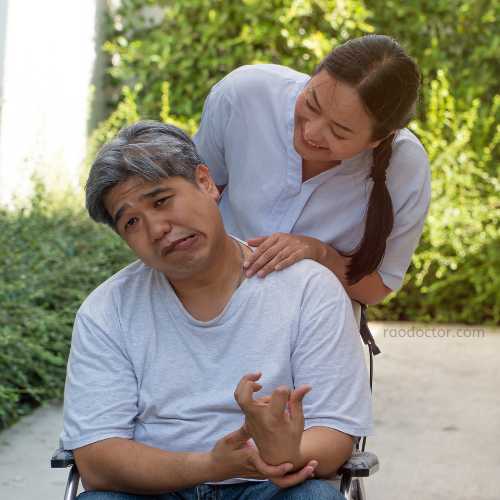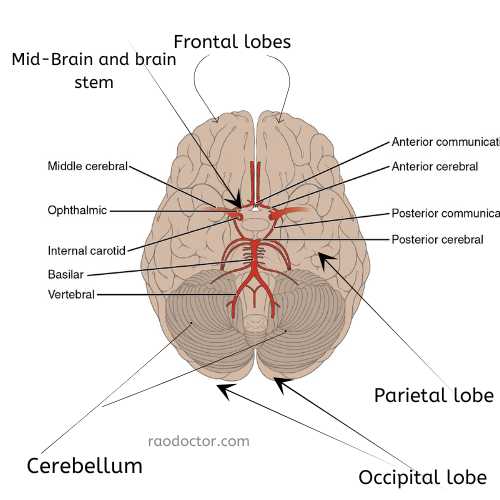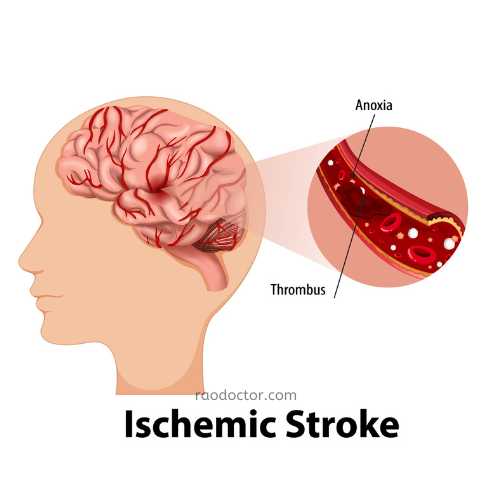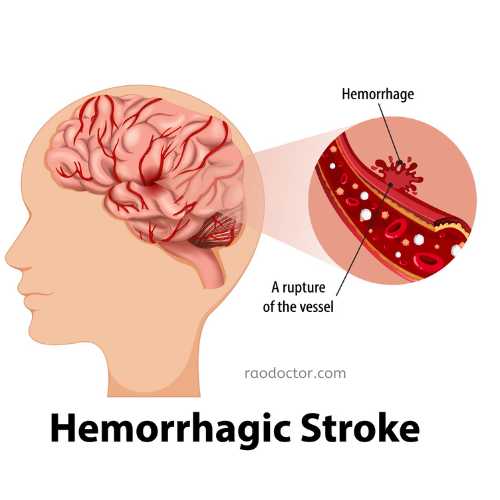Introduction
In my last blogpost on Fungal skin Diseases, I mentioned at the end that my next topic of discussion will be on Stroke. So here we are- let’s learn all about this dreaded condition.
At the outset, I would like to mention that this topic being quite exhaustive, I will be splitting into 2 parts-

Part 1- How stroke occurs, what are its sign/symptoms, complications and the investigations required to diagnose it.
Part 2- Stroke prevention, treatment and rehabilitation.
Listen to this article
If you prefer listening, you can listen to this article while reading and scrolling down-
Strokes are one of the leading causes of death worldwide. According to the Centers for Disease Control and Prevention, nearly 134,000 people have a stroke every year. However, that number could be even higher because many cases go undiagnosed.
There are many risk factors for having a stroke, including age and genetic disposition. Luckily, there are ways to reduce your risk of having a stroke by making simple lifestyle changes and getting tested regularly if you’re at high risk.
Stroke is also known as an “ischemic attack” because it is caused by a blockage or rupture of blood vessels supplying blood to the brain.
If you know someone who has had a recent stroke, let them know that they are not alone, and encourage them to take control of their future by continuing with therapy and keeping active.
In this article, you will learn all about strokes- what causes them, how to prevent one or deal with one if it happens to you or someone you love.
What Is a Stroke?
A stroke is an interruption of blood flow to the brain. It’s usually caused by a rupture of a blood vessel or lack of blood supply of the brain. The rupture can cause blood to leak into the surrounding brain tissue and form a blood clot.

If the clot is large enough, it can block blood flow to the surrounding brain and cause a stroke. While some people have only one episode, others have a “recurrent” stroke, which is more serious.
Strokes can cause paralysis, loss of sensation, speech problems, vision loss, or even death if they’re severe enough.
There are two types of strokes: ischemic and hemorrhagic.
Ischemic strokes account for about 87% of all strokes, while hemorrhagic strokes account for just 13%.
The Anatomy of a Stroke-why and how it happens
The blood supply to brain
Before we learn why and how stroke occurs, let’s learn a bit about the blood supply to the brain.
Our brain gets blood from 2 major sources [see the image below]-
- Direct from the heart through the carotid arteries.
- Vertebrobasilar arteries

As you can see in the image above, there is a circle of blood supply in the middle of the brain. It is called the Circle of Willis. It is formed by the branches of the two arteries mentioned above- the Internal Carotid and Vertebrobasilar arteries.
Both internal carotid and the vertebrobasilar arteries give out branches [ as shown above] that supply nourishment to the brain cells- the neurons. The nourishment comes in the form of nutrients like glucose and oxygen needed to give energy to the brain.
Let’s learn a bit about the blood vessels that are mostly affected in stroke:
- Middle cerebral artery (MCA)
- Anterior cerebral artery (ACA)
- Posterior cerebral artery (PCA)
- Internal carotid artery (ICA)
- Basilar artery (BA)-
Now let’s learn which parts of the brain these arterial branches supply and how they affect that part if they get diseased.
The parts of the body that are paralyzed due to these blood vessels being affected are as follows:
Middle Cerebral Artery (MCA) –
The MCA supplies blood to the lateral surface of the brain which affects the following areas:
- Upper extremity weakness or paralysis on the opposite side of the body
- Face drooping on the opposite side of the body, for example, if right MCA is affected, the left side of the face will droop
- Language difficulties or talking, such as aphasia [inability to form words]
- Sensory changes on the opposite side of the body
Anterior Cerebral Artery (ACA) –
The ACA supplies blood to the front part of the brain which affects the following areas:
- Lower extremity weakness or paralysis on the opposite side of the body
- Difficulty with voluntary movement of the leg on the opposite side of the body
- Cognitive changes, such as confusion and memory loss
- Loss of bladder and bowel control causing incontinence [inability to hold] of urine or frequent passing of stools
Basilar Artery (BA) –
The Basilar Artery supplies blood to the brainstem which affects the following areas:
- Paralysis of both sides of the body
- Difficulty with coordination and balance
- Difficulty with respiratory and cardiac functions
Internal Carotid Artery (ICA) –
The Internal Carotid arteries supplies blood to the front and middle part of the brain, including the temporal and parietal lobes.
Internal Carotid Artery affects the anterior portion of the brain, including the frontal and temporal lobes causing-
- Paralysis of the face, arm, and leg on opposite side of the body,
- speech difficulties, and
- Paralysis, weakness, and numbness on the opposite side of the body are just some of the potential consequences of an internal carotid artery blockage. It is essential to seek medical attention promptly if you experience any of these symptoms and suspect that your internal carotid artery may be involved.
Posterior Cerebral Artery
The posterior cerebral artery plays a crucial role in the proper functioning of our brain. It supplies various parts of the brain, including the occipital lobe, thalamus, and midbrain.
If this artery is affected, it can cause severe damage to these areas, leading to paralysis of the body’s specific parts. The symptoms may range from
- vision problems,
- difficulty speaking,
- loss of sensation, and
- control over one’s movement
Now that you know how these main arteries nourish which part of our brain and if there is an interruption of this blood supply, either due to rupture or blockage of any of these arteries, you can get a stroke.
So, what does having a Stroke mean?
Strokes happen when the blood supply to the brain is stopped or reduced. They can happen almost anywhere in your body, but the most common areas for them to occur are in the heart, or brain.
In the heart, we call causing Angina that causes temporary chest pain or damage to heart muscles that is called heart attack or myocardial infarction.
Similarly, in the case of the brain, it is called a transient cerebrovascular disorder leading to lack of blood supply to the brain (also called ischemia) or rupture of blood vessels that supply blood to the brain. So, you can conveniently call it a brain attack.
Types of Strokes
Stroke can be classified into two categories: ischemic and hemorrhagic, as shown below-


Ischemic strokes occur when a blood clot blocks a blood vessel in the brain, while hemorrhagic strokes happen when a blood vessel in the brain ruptures and bleeds into the surrounding tissue.
Both types of strokes can cause serious damage to the brain, leading to disability or even death.
One more type -Transient ischemic attacks (TIAs)- are also considered a type of stroke, often referred to as “mini strokes,” and are caused by temporary blockages in blood vessels [read more about it below].
What is Transient Ischemic Attack
Sometimes the stroke lasts for a few minutes to an hour after which there is a complete recovery. This is called Transient Ischemic attack.
In the brain, apart from the two major arteries supplying blood to it, there are many smaller arteries called capillaries. Sometimes these capillaries can go into spasm or get constricted, due to stress or high BP and then you may get temporary paralysis of a particular body part. This is called Transient Ischemic attack or TIA.
These areas are at risk because they all have very narrow blood vessels [the capillaries] that can become blocked or burst easily when there's too much pressure on them.
If this happens, blood can’t get where it needs to go, which can cause health problems like partial paralysis.
How to know which part of your brain is affected?
You have already learned which artery supplies to what parts of the brain. Now let’s learn the different parts of the brain with their function to know how a disruption of blood supply can damage that part. The effect of this disruption will affect that particular function of the body supplied by nerves from the brain.
If you have paralysis of a particular body part, say the left arm or left side of the face, it’s important to know where in your brain this has happened so that your health care provider can give you the best treatment and help you recover. This picture will show you different parts of your brain and what function they do-

Risk Factors for Having a Stroke
There are many risk factors involved in having a stroke and almost all of them are preventable, except for some which cannot be altered or changed.
Here are some of the common causes that we have to study and use the knowledge to remain healthy-
- Age: As you get older, you have a higher risk of having a stroke. The majority of strokes occur in people over the age of 65.-
- Gender: Women are more likely to have a stroke than men. This may be because women have higher rates of heart disease than men.
- Ethnicity: Stroke risk may vary depending on your ethnicity. For example, Hispanic or Latino people have a higher rate of stroke than white people.
- Family History: If you have a family history of strokes, you may be more likely to have one.
- Diet: A diet that is low in fat and high in fruits, vegetables, and whole grains is linked to a lower risk of stroke.
- Exercise: Regular exercise can help lower your risk of stroke. This is especially important if you are at higher risk for stroke due to other risk factors.
- Smoking: Smoking cigarettes is linked to a higher risk of stroke.
- Diabetes: People who have diabetes have a higher risk of having a stroke.
- High blood pressure: People who have high blood pressure are at higher risk of having a stroke.
Warning Signs of a Stroke
Are there any warning signs of getting a stroke? Yes, there are, and they are-
- Sudden weakness or numbness in your face, arm, or leg on one side of your body. You might also suddenly not be able to move your mouth or tongue.
- Sudden trouble seeing. You might see flashing spots in your eyes or a blind spot in one or both eyes.
- Sudden trouble walking or losing your balance. You might feel unsteady, like you’re walking on a boat in rocking water, or you might fall.
- Sudden trouble talking or understanding speech. You might have trouble understanding what other people are saying, or you might not be able to speak clearly.
- Sudden, severe headache that is different from headaches you have had before.
- Feeling confused or disoriented.
A stroke is an emergency and the faster you respond [if you are a relative or caregiver], the better the outcome from treatment.
Know the 4-letter acronym FAST to help you figure out if you are going in for a stroke and prevent complications-
F- Facial Drooping
A- Arm Weakness
S-Speech Difficulty; if you have any of these problems, then it is
T- Time to call emergency
In my next article, I will discuss the various ways by which you can prevent a stroke, various treatment options and how to get rehabilitated after an attack.
Final Words
Strokes are serious, but they are also highly preventable. By following a healthy diet, engaging in regular exercise, and maintaining regular medical care, you can reduce your risk of having a stroke.
If you think you or a loved one is having a stroke, don’t wait for the symptoms to subside. Seek immediate medical attention. By knowing the signs of a stroke, you can help protect yourself and those around you from this serious health condition.
Useful Resource- Speech after stroke
If you have found this article useful, do share it with your relatives and friends. If you have a Twitter account,
Click to Tweet below-
Stroke Part 1: Definition, Causes, Sign and Symptoms you should know Share on XMy next article will be on prevention, treatment and rehabilitation of a stroke patient. Subscribe to my blogs with your email ID and stay connected.
Adios.

